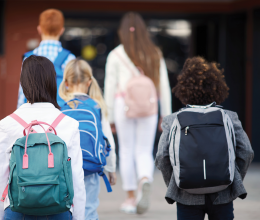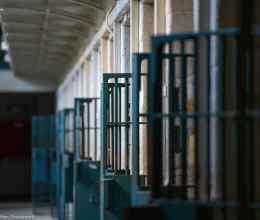
School districts across the country are reassessing the efficacy of integrating police officers into schools. This comes after many years of advocacy from impacted youth and on the heels of increased awareness of police brutality and the misuse of law enforcement for social services.
Many schools are beginning to feel the impacts of COVID-19 on their budgets and are struggling to provide the minimum resources needed for education, further calling into question the appropriateness of spending scarce education dollars on policing. Despite this, some school districts are paying for more police officers and security personnel than even required by state law.
Read our new 2020 report: "The Cost of School Policing: What Florida's students have paid for a pretense of security."
In this conversation, Florida’s school districts have been at the mercy of the Legislature. There has been a perception that they have only the false choice between placing a police officer or an armed civilian at every school due to a state mandate. Meanwhile, our students suffer.
-
For the first time ever, there are more police officers working in Florida schools (3,650) than school nurses (2,286).
- The number of police officers in schools is more than double the number of school social workers (1,414) and school psychologists (1,452).
- During the 2018-19 school year, the number of youth arrests at school increased 8%, while the number of youth arrested in the community continued to decline by 12%.
- The percentage of youth arrests happening at school hit a five-year high of 20%.
- The number of students expelled from school increased 43%.
- Schools reported more than four times as many incidents of using physical restraints on students.
- Police officers arrested elementary-aged kids 345 times, including an arrest of a five year old and five arrests of six-year olds, during the 2018-19 school year.
On the Blog: Florida Must Reassess the Role of Police in Schools
We cannot continue asking our students to carry the weight of adult fear and inaction at a time when they are more vulnerable than ever.
An analysis of Florida’s experiment with school policing illustrates that the school policing mandate has only increased negative outcomes for our students:
- The presence of law enforcement was related to a greater frequency of school arrests (40-82% more at the school-level). This relationship existed at elementary, middle and high school levels.
- The presence of law enforcement predicted greater numbers of behavioral incidents being reported to law enforcement, particularly for less severe infractions and among middle schoolers.
- There was little consistent evidence that the presence of law enforcement decreased the number of behavioral incidents occurring, indicating that school-based law enforcement were not necessarily making schools safer.
Florida lawmakers must repeal the mandate for police and stop the push for armed personnel in schools and return discretion to local communities over whether and how police should be involved in schools. In the meantime, school districts can adopt policies, both internal and as part of memorandums of understanding with law enforcement agencies, to mitigate the harm of increased school policing:
- Increase the employment of student support staff.
- Adopt minimum training requirements and accountability measures for police working in schools.
- Adopt a minimum age of arrest.
- Adopt limitations on the use of force against children.
- Adopt student codes of conduct with consequences clearly outlined for specified behavior that limit the involvement of law enforcement to those situations posing immediate safety risks.
- Assign clear duties to officers to focus on controlling access to campus, not policing the hallways or engaging in student discipline.
- Adopt effective discipline policies and practices that teach and reinforce positive behavior.
- Educate teachers and staff to effectively manage classroom behavior and about when it is appropriate to call the police on their students and when it is not.
- Teach students about their rights in police encounters and avoid blurring the lines between law enforcement and school staff when investigating, searching and interrogating students.
We cannot continue asking our students to carry the weight of adult fear and inaction at a time when they are more vulnerable than ever.
Resources
Download the Florida School to Prison Pipeline Profile, 2018-19
New study: "The Expanding Presence of Law Enforcement in Florida Schools," F. Chris Curran, PhD Associate Professor and Director of the UF Education Policy Research Center.
Abstract: The presence of law enforcement in public schools has been a common security practice in the state of Florida for several decades. Following the tragic 2018 school shooting in Parkland, FL, the state passed a law requiring all public schools to either have law enforcement or other armed personnel present. Drawing on state-wide data for the school years 2014-15 through 2018-19, this report examined the relationship between law enforcement in schools and a number of outcomes including reports of behavioral incidents to the state, incidents reported to law enforcement, school arrests, and exclusionary discipline. This analysis used statistical techniques that controlled for both observable characteristics of districts and schools as well as unobserved characteristics that were fixed over time. Findings suggest that the 2018 Marjory Stoneman Douglas High School Public Safety Act significantly increased the presence of law enforcement in schools, particularly in elementary schools. The presence of law enforcement in schools was related to increases in the number of behavioral incidents reported to the state, the number of such incidents reported to law enforcement, and student arrests. The results suggest a need to reconsider whether law enforcement should be present in schools, and, if they are, how they can be implemented in a way that minimizes unnecessary exposure of students to law enforcement and arrests.






